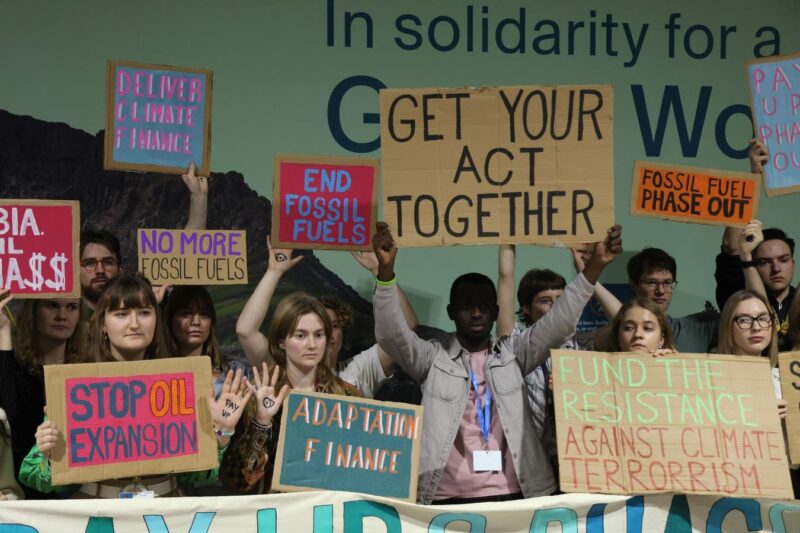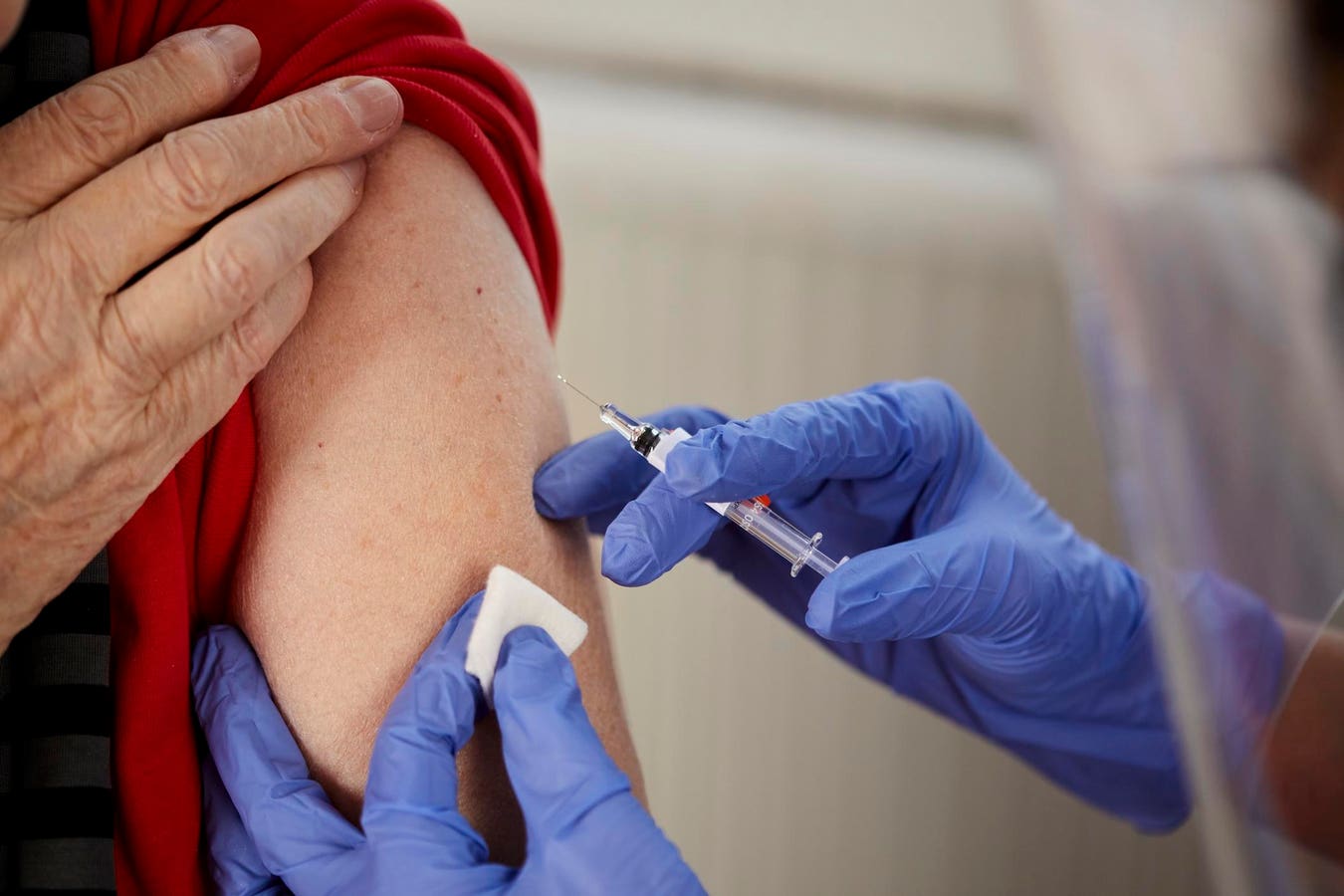Activists at the COP climate conference held last year in Baku, Azerbaijan. This year’s conference will be in Brazil next month. Raising ambition to meet the Paris Agreement goal is a key discussion item. (Photo by Sean Gallup/Getty Images)
Getty Images
The 1.5-degree goal is critical to our efforts to limit global warming. As many as 195 countries committed to this goal as part of the landmark Paris Agreement 2015. Despite that, in the past few years, scientists and practitioners—from academia to corporates—have been drawing attention to whether this goal is feasible. Many circles also have a sense of inevitability that we may not meet the goal after all. Discussions have also begun on bracing for the temperature overshoot and what breaching the 1.5-degree goal could mean for businesses and households, such as higher insurance costs to deal with climate extremes.
One reason the 1.5-degree goal has been questioned is that short-term increases are becoming more frequent, raising concerns about the long-term target. Earlier this year, even the World Meteorological Organization highlighted an 86% chance that at least one of the next five years will be more than 1.5 degrees above the pre-industrial average, baseline year scientists often use to check for alignment with the temperature goal. Other reports indicated that 2024 was the first-year warming exceeded the 1.5°C mark for a full year.
All of the above show growing uncertainty about keeping the temperature under 1.5 degrees Celsius. One may wonder if this target is still reasonable.
To judge whether we can meet the 1.5-degree goal, we need clarity on what it means—especially how temporary overshoots above the goal for some years fit in. Another critical milestone of keeping the goal alive is the climate action piece: ensuring mitigation efforts are aligned to reaching the goal of net-zero carbon emissions by 2050. As of this year, we are halfway to that milestone, with 25 years to go, so it is reasonable to assess how countries are faring in keeping their promises.
The 1.5 Degree Celsius Target & Overshoot—Explained
Let’s start by getting the facts right. The ambition of 1.5 degrees refers to the long-term intention to limit global warming, and in reaching that goal, there could be a period of overshoot.
The language in the landmark 1.5-degree Special Report of the Intergovernmental Panel on Climate Change, SR1.5, not only highlights the importance of keeping the goal of staying within 1.5 degrees but also uses the words’ no or limited overshoot’ to refer to the possibilities of the temperature being slightly above that goal and then eventually returning to 1.5 degrees.
In the mitigation pathways modelled by scientists in the above report, there is about a 50% probability that warming will be limited to 1.5 degrees with no or limited overshoot. Global net-zero CO₂ emissions must be reached by the early 2050s to achieve this goal. This net-zero-by-2050 goal should not be confused with bringing all greenhouse gases to net zero, which comes later.
The limited overshoot part of meeting the 1.5-degree goal is often left out of conversations. Thus, a clearer understanding of this idea of overshooting is essential to keeping the 1.5-degree ambition alive.
Both limited and high overshoot remain plausible in 1.5-degree aligned pathways. The IPCC describes limited overshoot as global warming exceeding 1.5 degrees by up to about 0.1 degrees, and high overshoot as about 0.1–0.3 degrees, potentially lasting several decades.
The possibility of high overshoot has received far less attention than limited overshoot. The larger the overshoot, the greater the effort needed to bring emissions down in line with the 1.5 degree target and the greater the adverse consequences for ecosystems and societies, from droughts in some parts of the world to floods in others.
If the temperature overshoots, limited or high overshoot, there is potential to bring emissions back down in those scenarios, albeit with significantly more investments in technologies such as carbon dioxide removal. However, some scientists question the confidence in bringing emissions back under control after a temporary overshoot. In a study published in Nature Climate Change, the authors argue that the 0.3-degree figure —as used in the paragraph above—for high overshoot, is a median outcome and therefore does not reflect the extremes. Overusing this median figure may lead to overconfidence in the risks under the overshoot pathways.
There’s surprising confidence that carbon-dioxide removal will act like a magic wand—even though the level of investment in these technologies remains far below what’s required.
Some key questions remain unclear, making it essential for scientists to provide more guidance. Do the recent overshooting figures indicate that we are already approaching high overshoot? More evidence-based discussion on such questions will help instill faith in keeping the momentum up.
How Are Countries Doing In Their National Climate Plans To Keep 1.5 Degrees Goal Alive?
It is now quite clear that the national climate action plans, popularly known as NDCs or the Nationally Determined Contributions, submitted in the last round lacked ambition. Even if all current NDCs are met, the world would only be on track to limit warming to just under 2-degrees. This finding was based on the scientific analysis published in Nature Climate Change in which the authors quantified country pledges to the long-term global warming goal. Other peer-reviewed studies have reiterated these findings in varying degrees.
These warming estimates are concerning, especially considering the IPCC guidance on high overshoot to be only 0.3 degrees.
Looking at this in terms of how much emissions the current policies will reduce, if all NDCs submitted until 2024 were realized, this would reduce emissions by only ~5.6 % by 2030 relative to 2019, based on last year’s synthesis report on NDCs, a special report by the UN that tracks commitments for temperature alignment.
For the 1.5°C long-term goal, based on IPCC AR6, GHG emissions should fall by ~43% by 2030 relative to 2019. The gap between the two—i.e., what must be done and what is committed in the NDCs—is sizeable. Under the Paris Agreement, NDCs are the mechanism through which countries commit to keeping national emissions aligned with the 1.5°C target. NDCs are submitted every five years. The last round was in 2020, and the next round is due this year by COP 30 2025.
It is crucial to ramp up ambition in the next round of these climate plans, but progress is slow. In this new round, only 2 of the 69 countries whose NDCs have been tracked by Climate Action Tracker are aligned with 1.5 degrees Celsius. That isn’t very encouraging. One of the key expectations from the upcoming COP 30 is to encourage countries towards greater ambition. However, as noted in a recent episode of the Outrage & Optimism climate podcast, there is already discussion that national-level bureaucracy around committing to climate plans is so great that other actors—such as the private sector—will be the push factor driving climate action.
Facing The Reality Of High Overshoot From The 1.5-Degree Goal
The possibility of limiting global warming to 1.5 degrees with no or limited overshoot is questionable. But that does not mean this goal is impossible.
It just means we need to more actively consider scenarios of high overshoot and what that would mean in concrete terms for mitigation, adaptation, and climate finance. More scientific guidance on such scenarios is needed.
Governments and scientists require a shift in approach. in discussions on global warming. They should move beyond simply aiming to avoid overshoot and denying the emerging reality. The focus should be on how to deal with a potential high-overshoot situation. This uncomfortable truth is one we need to face sooner rather than later—only then can we be prepared for what the situation will demand.









